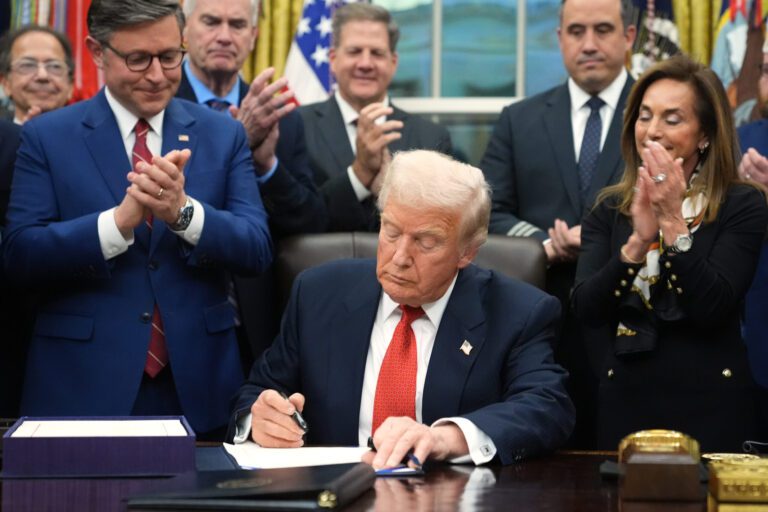Historic Government Shutdown Ends: Key Takeaways and Future Implications
The longest government shutdown in American history has come to an end, following President Trump’s signing of a crucial spending bill late Wednesday. The end of this shutdown, which lasted several weeks, brings immediate relief but also sets the stage for ongoing legislative battles.
The Spending Bill: Overview and Legislative Journey
- Key Vote: The House passed the spending bill 222 to 209, with six Democrats supporting it while two Republicans opposed it.
- Senate Action: The Senate had previously approved the legislation on Monday, following a bipartisan agreement reached by eight Senate Democrats after nearly seven weeks of blockages against the Republican funding strategy.
This legislation finances essential government operations for the remainder of the fiscal year, concluding in September 2026, though additional negotiations are necessary before a new funding deadline on January 30.
The Controversial Provision
A contentious part of the spending bill involves a provision from the Senate’s appropriations bill, which grants specific senators the right to sue the Justice Department over unauthorized data subpoenas linked to the "Arctic Frost" investigation. This could potentially lead to significant financial payouts for the senators involved.
- Financial Implications: Senators can sue for $500,000 per incident, raising the stakes considerably. Senator Lindsey Graham has indicated intentions to pursue legal action, claiming his records were among those obtained.
Graham stated, “I want to make it so painful no one ever does this again,” underscoring the potential for a widespread backlash against government overreach.
Legislative Reactions and Future Moves
Despite the bill’s passage, Speaker Mike Johnson expressed his discontent regarding the provision and plans to remove it. He stated:
“The House has a strong opinion about it. I’m certainly not happy about it.”
Upcoming Actions
- Proposal for Repeal: Johnson has publicly committed to supporting legislation aimed at repealing this provision, and a vote is expected to occur next week.
- Bipartisan Concerns: Even some lawmakers who were affected by the subpoenas, like Congressman Mike Kelly, have voiced discomfort over the ability of senators to sue.
The Economic Impact of the Shutdown
The repercussions of the shutdown were widespread, affecting various sectors including:
- Air Travel: The National Air Traffic Controllers Association reported that flight operations could take weeks to stabilize due to delays and cancellations.
- Federal Workforce: Hundreds of thousands of federal employees faced furloughs, while many were permanently dismissed; however, Senate Democrats managed to reverse some of these firings.
- Nutrition Programs: The SNAP program, essential for many American families, faced funding interruptions, exacerbating food insecurity across the country.
Economic Cost Estimates
According to the Congressional Budget Office, the economic toll of the shutdown could lower the fourth-quarter GDP by 1.5% to 2%, costing the economy between $28 billion and $39 billion overall. Senator Tim Kaine highlighted the plight of his constituents, stating:
“People suffered. Food banks across the country ran out of supplies, and Americans went hungry.”
The shutdown’s chaos could have also prompted a dangerous consolidation of power, potentially leading to the elimination of the Senate filibuster.
The Path Ahead for Congress
As the government returns to normal operations, three out of twelve annual appropriations bills have finally been passed. Lawmakers face the urgent task of completing the remaining nine bills by the approaching deadline in late January.
Key Dates to Remember
- January 30: Deadline for the remaining appropriations bills.
- Next Week: Anticipated vote on repealing the controversial provision.
These events underscore the volatile relationship between differing political factions and the continuing challenges Congress faces in reaching bipartisan consensus.
For more detailed updates on government policy and funding measures, visit Congress.gov and stay tuned for further developments as legislators navigate the complexities of American governance.


